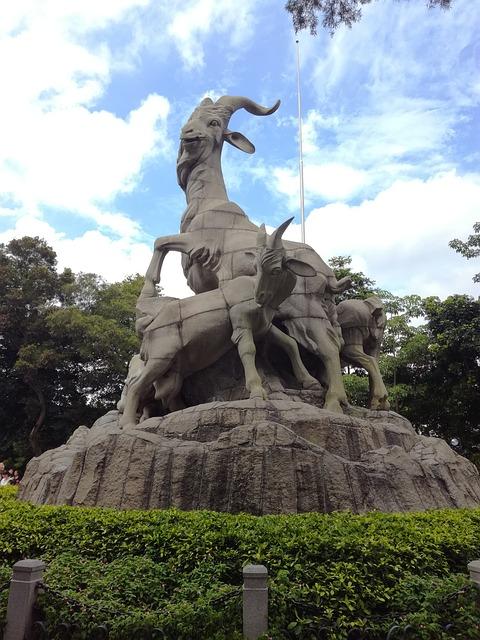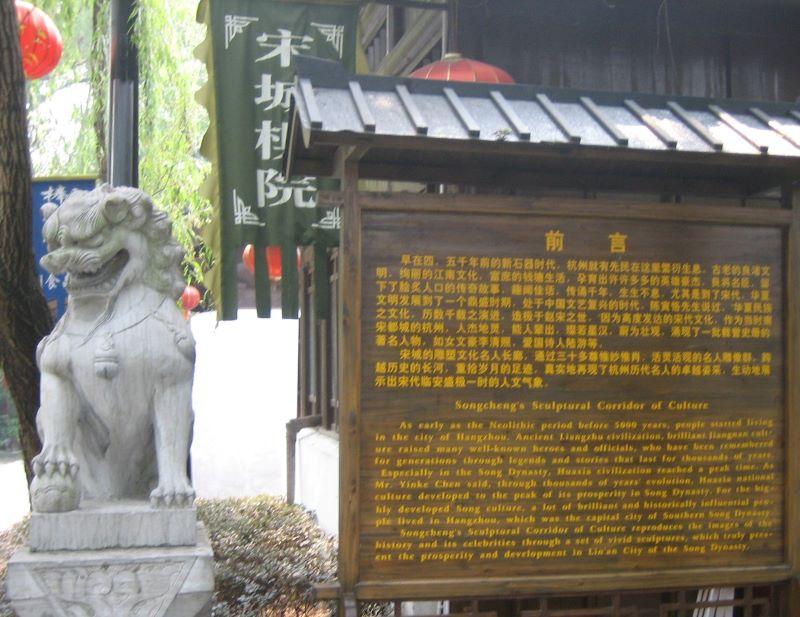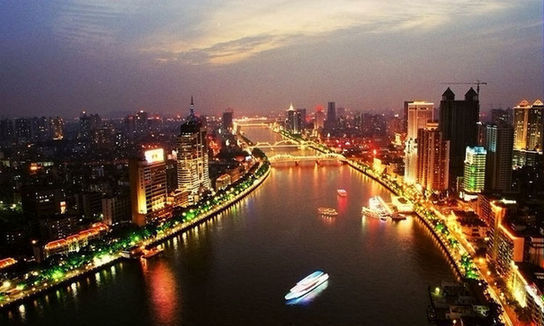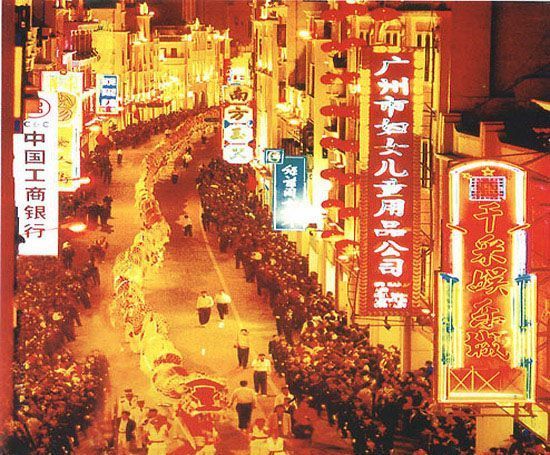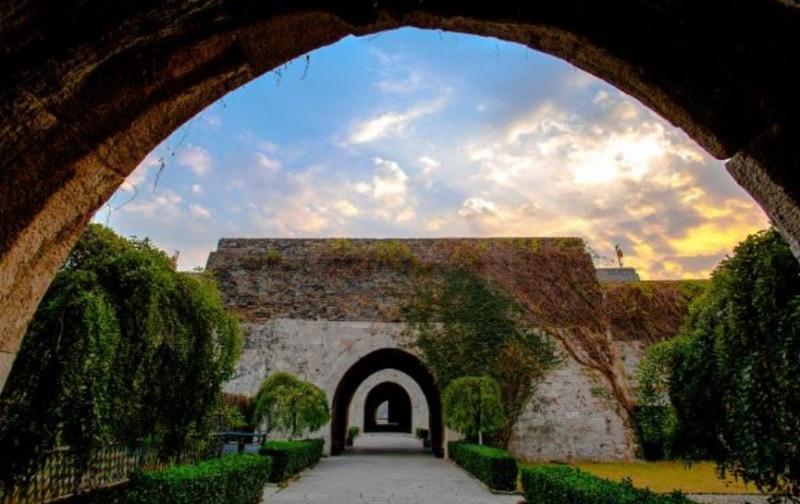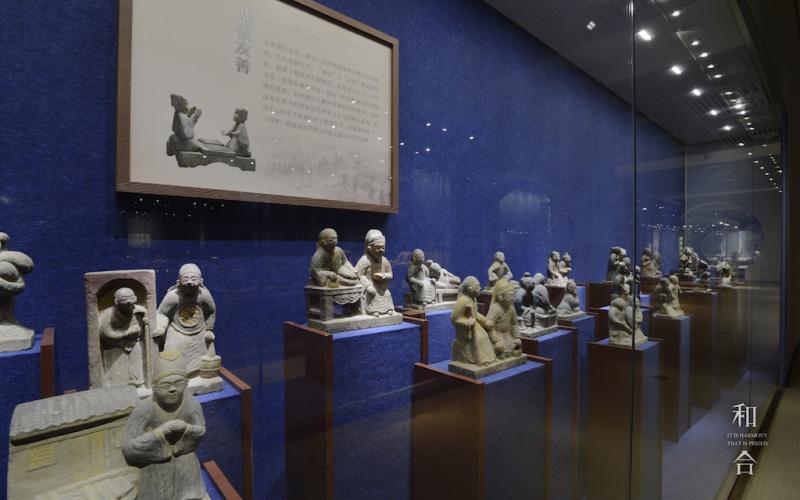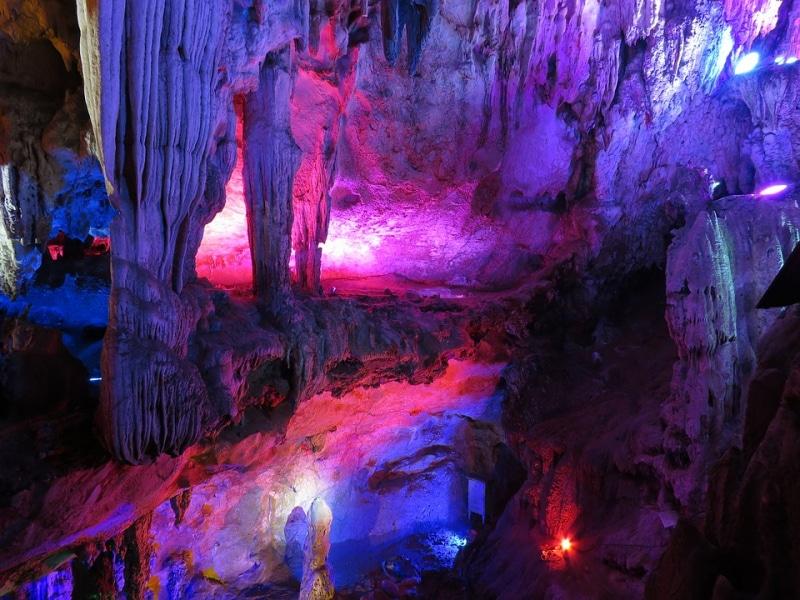ArtandCulture, China
Removed from Unnamed collection
Yuexiu Park
Yuexiu Park, named after Yuexiu Mountain, built in 1952, is the biggest comprehensive sight-seeing park. https://www.chinahighlights.com/guangzhou/attraction/yuexiu-park.htm
Map
Removed from Unnamed collection
Songcheng
Song Dynasty Town (Songcheng) is the largest theme park in Hangzhou, featuring the cultural characteristics of the Song Dynasty (960 - 1279 AD), and also the first theme park built in Zhejiang. With Wuyun Mountain in the north and West Lake to its northeast, Song Dynasty Town is on the northern bank of the Qiantang River. Its layout and architectural style are based on a precious ancient painting, 'Along the River During the Qingming Festival', which was made by famous painter Zhang Zeduan, displaying the urban landscape and people's living condition of that dynasty.
The theme park is divided into three fields, Performing Songcheng, High-tech Songcheng, and Cultural Songcheng. Performing Songcheng includes the Romance of the Song Dynasty and ten theme shows. High-tech Songcheng has many featured events, such as reproducing area of 'Along the River during the Qingming Festival', two distinguishing haunted houses, and a mysterious street. Using advanced technology, they are all very realistic and mysterious, giving visitors a totally different experience. Cultural Songcheng covers some folk activities, such as traditional workshops, custom shows and Buddhist temples. https://www.travelchinaguide.com/attraction/zhejiang/hangzhou/song-dynasty-town.htm
Map
Removed from Unnamed collection
Shanghai Grand Theatre
The spectacular ten-storey Shanghai Grand Theatre showcases a variety of musical, dance and dramatic acts under it's instantly recognisable curved roof in People’s Square. The theatre itself is divided into three separate auditoriums, the largest of which, The Lyric Theatre is home to ballet performances such as Swan Lake, orchestral concerts and traditional Peking opera from the China National Peking Opera Company. The box office is open from 9am-7pm daily, see schedule for opening times of individual shows. http://www.timeoutshanghai.com/venue/Theatres/830/Shanghai-Grand-Theatre.html
Map
Removed from Unnamed collection
Sanshan Guildhall
Hang out in the old haunt of Fujian fruit merchants at the Sanshan Guildhall – one of many guildhalls to pop-up in the city for traders to seek camaraderie. Though it’s been shifted 30 metres south from its original position, this relatively late addition (built in 1909) is also the only well-preserved guildhall from the Qing dynasty and currently serves as a museum. 1551 Zhongshan Nan Lu, Bansongyuan Lu. http://www.timeoutshanghai.com/features/Things_to_Do-Around_Town/44571/9-places-to-see-Shanghai-through-the-ages.html
Map
Removed from Unnamed collection
Shanghai Postal Museum
One of the rare free museums in town, the original Shanghai Postal Museum in Hongkou well explains the history of the postal service in China. Venture up to the beautiful baroque rooftop to find a sculpted garden with a Romanesque clock tower and one of the city’s best low-level views: looking west up Suzhou Creek and east towards the Pudong skyline with the Art Deco Broadway Mansions in front. http://www.timeoutshanghai.com/venue/Around_Town-Museums-_Around_Town-Parks__Gardens/995/Shanghai-Postal-Museum.html
Map
Removed from Unnamed collection
Sacred Heart Cathedral
The cathedral, 35 meters wide, 78.69 meters long, and its twin towers 58.5 meters high is the largest Roman Catholic church in the Gothic style in China and Southeast Asia. It is sometimes referred to as 'Notre-Dame de Paris' in the East. Sacred Heart Cathedral, or Stone House, a Roman Catholic cathedral, is one of the oldest churches in Guangzhou and the largest of its kind in Southern China. Located on the north bank of the Pearl River, the church stands in the heart of the busy old town.
The cathedral was consecrated in 1888 after 25 years of construction. The construction of the cathedral turned out to be very challenging. None of the Chinese workers at that time had seen a western cathedral before, let alone built one. It was also tough for them to communicate with the French clergy who commissioned the building. http://www.china.org.cn/top10/2011-03/14/content_22137978_4.htm
Map
Removed from Unnamed collection
Night tour of the Pearl River
The Pearl River is the third longest river in China with a length of more than 2,000 kilometers. The river is composed of four separate river systems, which join up in Guangzhou, flow for about 70 kilometers, and then pour into the South China Sea. http://www.china.org.cn/top10/2011-03/14/content_22137978_2.htm
Map
Removed from Unnamed collection
Shangxiajiu Pedestrian Street
Shangxiajiu Pedestrian Street in Liwan District, Guangzhou, is one of the busiest commercial pedestrian streets in China. Located in the old town of Xiguan, the 1,218-meter-long street is lined with more than 300 shops. http://www.china.org.cn/top10/2011-03/14/content_22137978.htm
Map
Removed from Unnamed collection
The Ming Great Wall of Nanjing
Going back to the 14th century this historic landmark is a symbol of Nanjing’s time as the capital of the Ming Dynasty between 1368 and 1421.
Founder of the Ming Dynasty Emperor Zhu Yuanzhang ordered its building to protect Nanjing from invaders.
Purple Mountain, Xuanwu Lake and Qinhuai River provided additional natural defences as the Wall snaked around them. The curved Wall was unusual, as up until then city walls had been built in straight lines. Completed in 1386, Nanjing is one of the few cities to retain its original walls. Making the state-protected Ming Great Wall a national treasure.
The Ming Great Wall was 35 kilometres long. It was considered to be one of the longest city walls in the world. Today about 25 kilometres are still intact with the following six sections being opened to the public:
Zhonghua Men (Treasure Gate) to Shen Ce Men Gate (Peace Gate). It is approximately 6 kilometres long.
Zhong Shan Gate (Zhong Shan Men) to Guanghua East Street (Guang Hua Dong Jie), it is approximately 2 kilometres.
East Water Gate (Dong Shui Guan) to West Water Gate (Xi Shui Guan), it is approximately 6 kilometres.
Qing Ling Mountain (Qing Ling Shan) to Defense Garden (Guo Fang Yuan), it is approximately 1 kilometre.
Ding Huai Gate (Ding Huai Men) to Lion Mountain (Shi Zi Shan), it is approximately 4 kilometres.
Zhong Fu Road (Zhong Fu Lu) to Zhong Yang Gate (Zhong Yang Men), it is approximately 2 kilometres. http://www.cityofnanjing.com/article/the-ming-great-wall-of-nanjing/
Map
Removed from Unnamed collection
Nanjing Museum
Discover everything from ancient civilizations to the early days of the Republic in exhibitions, displays and performances. Being one of the first museums to be established in China, it is also one of the largest. http://www.cityofnanjing.com/article/nanjing-museum/
Map
Removed from Unnamed collection
Reed Flute Cave
The cave got its name from the verdant reeds growing outside it, with which people make flutes. Inside the cave is a spectacular world of various stalactites, stone pillars and rock formations created by carbonate deposition. Illuminated by colored lighting, the fantastic spectacle is found in many variations along this 240-meter-long cave. http://www.cnto.org/destination/guilin-2/attractions/
Map

